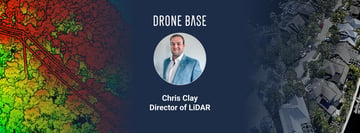Superfund sites are among the world’s most dangerously contaminated areas. Characterized by many as toxic waste dumps, these ecologically-damaged locations were once the repositories for waste left behind by short-sighted manufacturing facilities, processing plants, and landfills.
Hazardous to Your Health
The harmful materials found at Superfund sites pose serious risks to humans and the environment. On their own, chemicals and dangerous substances can be immediate threats to population centers. Unaddressed over the long term, pollution at such scale can lead to emergency scenarios like buildings exploding, rivers catching fire, and public health crises like the development of long-term health risks due to the close proximity to toxic substances.
Cleaning up Superfund sites is an important and necessary task, and it’s also an incredibly dangerous endeavor. Crews battling harmful substances inevitably place themselves at risk to exposure, making mitigation and remediation a task that’s hard to carry out using human beings alone.
The Drone Solution
Drones can play a significant role in the remediation and redevelopment of Superfund sites. Already employed in disaster sites throughout the world, drones make it possible to carry out tasks that pose serious risks to humans, like mapping and surveillance in toxic areas. Through drones, the cleanup of Superfund sites can be coordinated and managed from a distance while detailed insights are added along the way to make the process more accurate.
Drones can carry out aerial site surveys in real time, relaying on-the-ground conditions to either remote or on-site teams. Extensive 3D mapping can paint a full picture of the site’s damage and restoration progress, including regular photographic evidence showing incremental change. Drones can also identify structural damage and other issues in hard-to-reach areas and at high elevations, creating a more accurate record of potential cleanup needs.
Taking Action
Outside of Pennsylvania, the EPA is currently using drones to monitor Superfund sites contaminated with asbestos buried underground. Without human exposure, the drones can ensure asbestos isn’t being spread back into the atmosphere by a downed tree or an unwitting wild animal. Because asbestos poses a serious and significant risk to public health, oversight by drones allows for the safe surveillance and prevention of future issues that might be impossible without the aid of machinery.
As of June 2019, upwards of 1,300 Superfund sites have been identified across the United States. Many communities remain exposed to chemicals, harmful substances, and other toxins, and safely containing these materials needs to be prioritized in these areas. The use of drones can make these difficult tasks easier (and faster), while also ensuring that cleanup efforts are accurate, efficient, and far less dangerous than in the past.




.jpg?width=360&name=Banner%20Templates%20(12).jpg)
